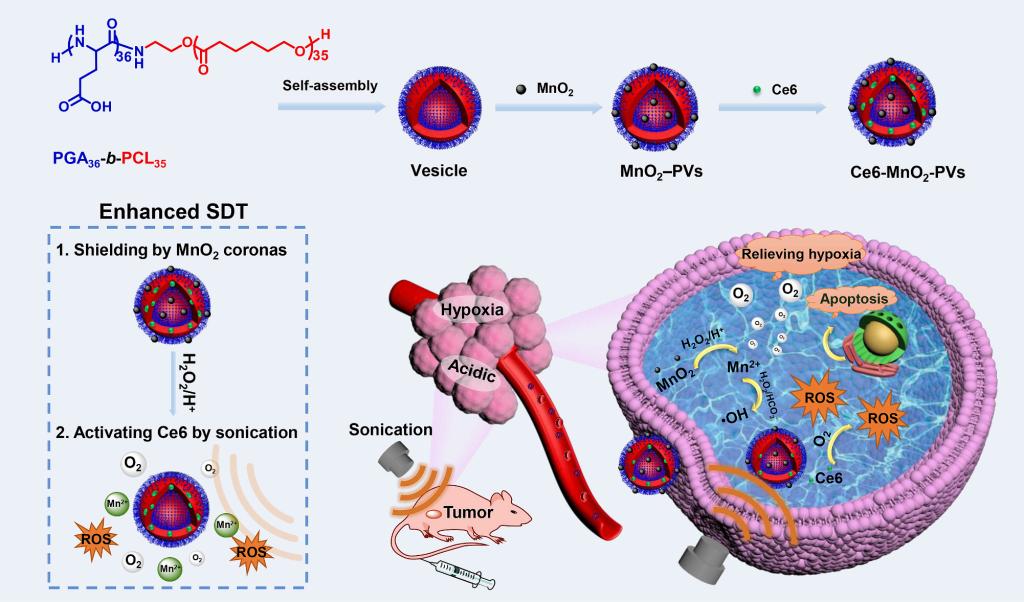
Abstract
The efficacy of sonodynamic therapy (SDT) is often limited by the insolubility of sonosensitizers and unfavorable hypoxia tumor microenvironment. To meet this challenge, an oxygen-generating polymer vesicle is developed to achieve enhanced SDT. The hydrophilic coronas and the hydrophobic membrane of polymer vesicles can function as different modules for the simultaneous delivery of manganese dioxide and chlorine e6 (designated as Ce6-MnO2-PVs). These Ce6-MnO2-PVs exhibited high catalase mimetic activity and could efficiently generate reactive oxygen species upon ultrasound activation. In vivo results showed that Ce6-MnO2-PVs almost completely eradicated the subcutaneous tumors (94% volume reduction) without any obvious systemic toxicity. Moreover, these Ce6-MnO2-PVs showed effective behavior for the attenuation of crucial tumor progression-releated factors. Specially, the expression levels of both hypoxia-inducible factor-1α and vascular endothelial growth factor at 4 h post-injection detected by immunofluorescence were reduced by 66% and 52%, respectively. These findings suggest that Ce6-MnO2-PVs may serve as an effective and safe platform for enahnced SDT in hypoxic tumors.
文章链接:Journal of Controlled Release, 2023, 353, 975-987.